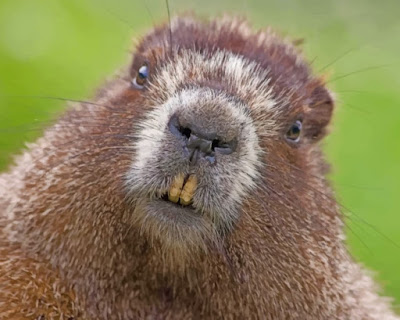The First TransSpecies Controversy — Woodchuck vs. Beaver
WE IDENTIFY AS BEAVERS
Beaver
Beavers are large, semiaquatic rodents in the genus Castor native to the temperate Northern Hemisphere. There are two extant species: the North American beaver (Castor canadensis) and the Eurasian beaver (C. fiber). Beavers are the second-largest living rodents after the capybaras. They have stout bodies with large heads, long chisel-like incisors, brown or gray fur, hand-like front feet, webbed back feet and flat, scaly tails. The Eurasian beaver has a more elongated skull with a more triangular nasal bone opening, lighter fur color and a narrower tail. The animals can be found in a number of freshwater habitats, such as rivers, streams, lakes and ponds. They are herbivorous, consuming tree bark, aquatic plants, grasses and sedges.
Beavers build dams and lodges using tree branches, vegetation, rocks and mud; they chew down trees for building material. Dams impound water and lodges serve as shelters. Their infrastructure creates wetlands used by many other species, and because of their effect on other organisms in the ecosystem, they are considered a keystone species. Adult males and females live in monogamous pairs with their offspring. When they are old enough, the young will help their parents repair dams and lodges and may also help raise newly born offspring. Beavers hold territories and mark them using scent mounts made of mud, debris and castoreum, a urine-based substance excreted through the beaver's castor sacs. Beavers can also recognize their kin by their anal gland secretions and are more likely to tolerate them as neighbors.
Historically, beavers have been hunted for their fur, meat and castoreum. Castoreum has been used in medicine, perfume and food flavoring, while beaver pelts have been a major driver of the fur trade. Before protections began in the 19th and early 20th centuries, overhunting had nearly exterminated both species. Their populations have rebounded, and they are both listed as least concern by the IUCN Red List of mammals. In human culture, the beaver symbolizes industriousness and is the national animal of Canada.
***
Groundhog
The groundhog (Marmota monax), also known as a woodchuck, is a rodent of the family Sciuridae, belonging to the group of large ground squirrels known as marmots.[2] The groundhog is a lowland creature of North America; it is found through much of the eastern United States, across Canada and into Alaska.[3] It was first scientifically described by Carl Linnaeus in 1758.[4]
The groundhog is also referred to as a chuck, wood-shock, groundpig, whistlepig,[5][6] whistler, thickwood badger, Canada marmot, monax, moonack, weenusk, red monk,[6] land beaver,[7] and, among French Canadians in eastern Canada, siffleux.[8]
The name "thickwood badger" was given in the Northwest to distinguish the animal from the prairie badger. Monax (Móonack) is an Algonquian name of the woodchuck, which means "digger" (cf. Lenape monachgeu).[9][10] Young groundhogs may be called chucklings.[11]: 66
The groundhog, being a lowland animal, is exceptional among marmots. Other marmots, such as the yellow-bellied and hoary marmots, live in rocky and mountainous areas. Groundhogs play an important role maintaining healthy soil in woodland and plain areas. The groundhog is considered a crucial habitat engineer.[12][13][14] Groundhogs are considered the most solitary of the marmot species. They live in aggregations, and their social organization also varies across populations. Groundhogs do not form stable, long-term pair-bonds, and during mating season male-female interactions are limited to copulation. In Ohio, adult males and females associate with each other throughout the year and often from year to year.[15][16] Groundhogs are an extremely intelligentanimal forming complex social networks, able to understand social behavior, form kinship with their young, understand and communicate threats through whistling, and work cooperatively to solve tasks such as burrowing.[17][18]




















Comments